Latin name: Physocarpus opulifolius
Category: ornamental flowering deciduous plants
Origin: North America, East Asia
Picturesque vesicle - the splendor and beauty of the garden
The vesicle (Physocarpus) is a tribal community of fourteen species of colorful ornamental plants that look like flowering fast-growing shrubs and adorn the Rosaceae family with their charming presence.
Gardeners are more interested in two species: the Amur vesicle and the Kalinoleaf vesicle, which, in turn, are represented by several varieties, some of their characteristics have absolutely no resemblance to each other. Details will be discussed below.
The name of this culture in Latin terminology, if translated from the Greek language, will consist of two components: “physo” means a bubble, and “carpos” means a fruit. The plant also has another name - physiocarpus.
The homeland of this shade-loving shrub can be considered North America and East Asia. Here, wild shade-tolerant shrubs prefer moist mixed forests, flat valleys or banks of rivers or streams.
In the European part of the globe, the vesicle appeared in the nineteenth century and was appreciated. To date, flower growers have become interested in numerous varieties of Physocarpus and have set up the cultivation of these unpretentious plants, both for green construction and amateur gardeners on inpidual farms.
The vesicle hedge looks charming and spectacular from these cultivated, unpretentious, fast-growing shrubs, which retain a chic decorative effect throughout the growing season, and are also resistant to gassed airspace. The vesicle in landscape design is also no less attractive and multifaceted, its beauty and charm were appreciated on merit.
This unique beauty is represented by sprawling bushes, which are composed of drooping branches. As a result, a lush spherical crown is formed. On adult shrubs, the bark peels off in the form of wide strips. In height, the plant can grow up to three meters in height. The shrub is decorated with three-lobed and five-lobed leaves, which are identical in shape with viburnum leaves.
The main magic and fragrance of Physocarpus is created by white or pink simple flowers with a huge number of stamens. They are grouped, clinging close to each other, in voluminous hemispherical inflorescences, the diameter of which reaches seven centimeters. And they look like small fluffy clouds, unusually tender and touching. This extraordinary enchanting beauty on unpretentious flowering shrubs can be tracked in late spring and with the onset of summer warming.
As a result of abundant flowering, a fast-growing shrub is decorated with very interesting fruits similar to swollen leaflets, as they grow older, they acquire a reddish tint. Throughout the year, this amazing shade-loving shrub looks great as a fast-growing hedge.
This indescribable beauty and excellent combination of this pretty plant with other charming cultures has been fully appreciated by florists. Physocarpus is a frequent addition to bouquets and arrangements that are made up of field and garden flowers.
Vesicles are fast growing shrubs for hedges. They will also look original in mixborders - elongated flower beds, the length of which is at least twice as long as its width.
The stepped planting of various plants makes the flower garden charming if it is correctly selected with various flowering and decorative leafy crops that will delight those present throughout the entire warm period.
Primrose, tulips, daffodils, pansies, exochords, cercis, chrysanthemums appear first - there are a lot of beautiful plants and everyone chooses beauty for their soul. The basis of the flower garden are perennials. The British call this flower garden "mixed border".
Vesicle types and varieties
Amur vesicle (Physocarpus Amurensis)
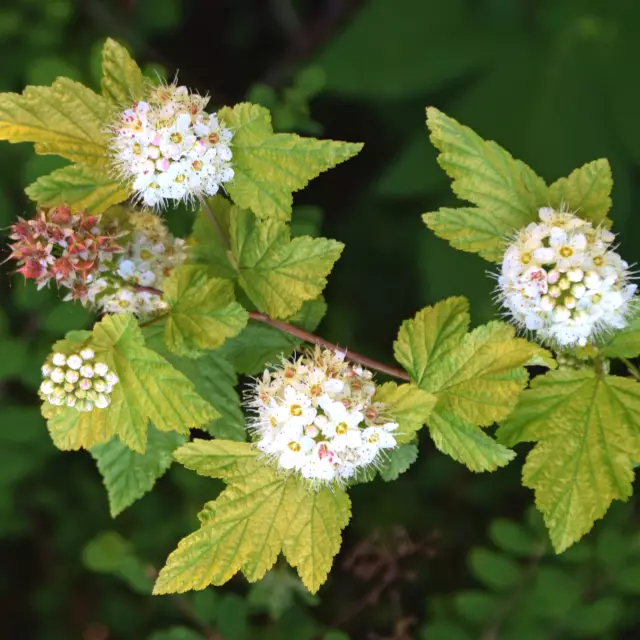 This species considers its homeland the Eastern part of Asia, where it grows in mixed forests and reaches a height of three meters. Winter-hardy shrub with a spherical green crown. Small white flowers are collected in corymbose inflorescences. In autumn, wonderful red berries add decorativeness to the shrub. Shrub looks great, single planting, and in groups with other plants. A shrub hedge has a unique look.
This species considers its homeland the Eastern part of Asia, where it grows in mixed forests and reaches a height of three meters. Winter-hardy shrub with a spherical green crown. Small white flowers are collected in corymbose inflorescences. In autumn, wonderful red berries add decorativeness to the shrub. Shrub looks great, single planting, and in groups with other plants. A shrub hedge has a unique look.
Little Angel vesicle (Physocarpus Little Angel)
 This variety is represented by undersized shrubs, the size in diameter reaches one meter. It has red-orange shoot tips. Young small leaves of a red-orange color become rich burgundy with age.
This variety is represented by undersized shrubs, the size in diameter reaches one meter. It has red-orange shoot tips. Young small leaves of a red-orange color become rich burgundy with age.
Bubble red baron (Physocarpus Red Baron)
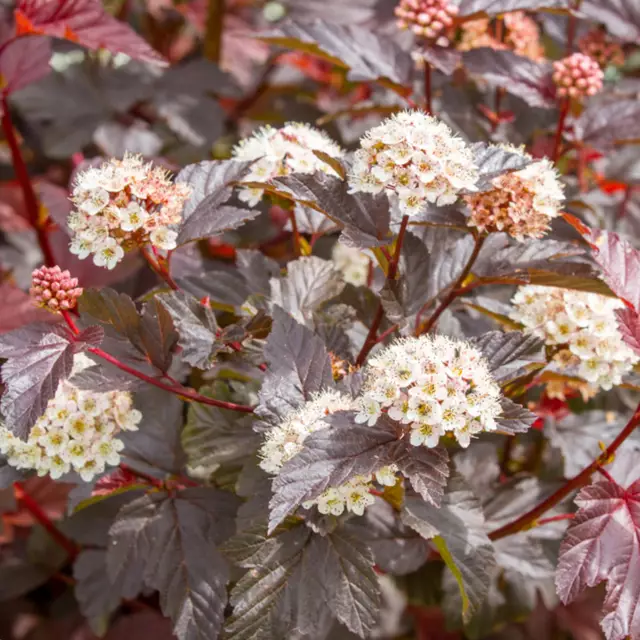 A two-meter shrub of a beautiful spherical shape. Seven-centimeter dark red leaves have an elongated shape and a corrugated texture. With the approach of autumn, the leaves become bronze in color.
A two-meter shrub of a beautiful spherical shape. Seven-centimeter dark red leaves have an elongated shape and a corrugated texture. With the approach of autumn, the leaves become bronze in color.
A very colorful unpretentious variety will become a real star and decoration of the garden plot, will contribute to the landscaping of the landscape.
Vesicle Summer Wine (Physocarpus Summer Wine)
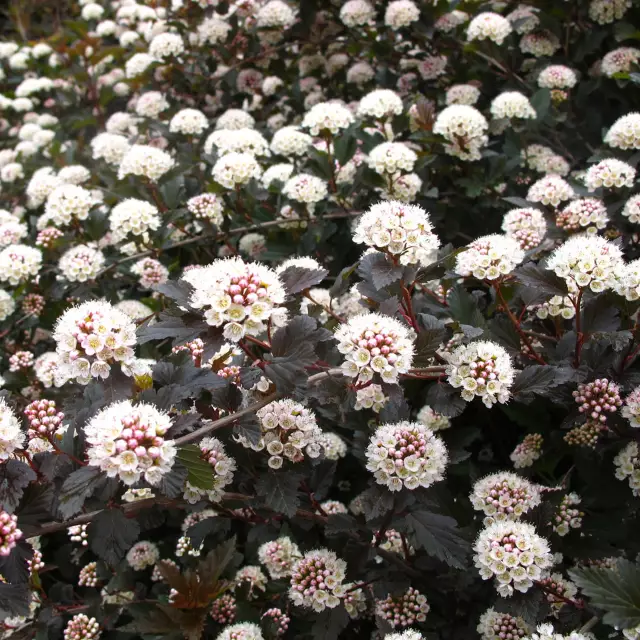 Frost-resistant, suitable for all regions, a two-meter shrub has spreading branches and foliage with the color of dark wine and a sheen of metal. Lush spring flowering is symbolized by pink-white inflorescences, densely located on the shoots.
Frost-resistant, suitable for all regions, a two-meter shrub has spreading branches and foliage with the color of dark wine and a sheen of metal. Lush spring flowering is symbolized by pink-white inflorescences, densely located on the shoots.
Vesicle lady in red (Physocarpus Lady in Red)
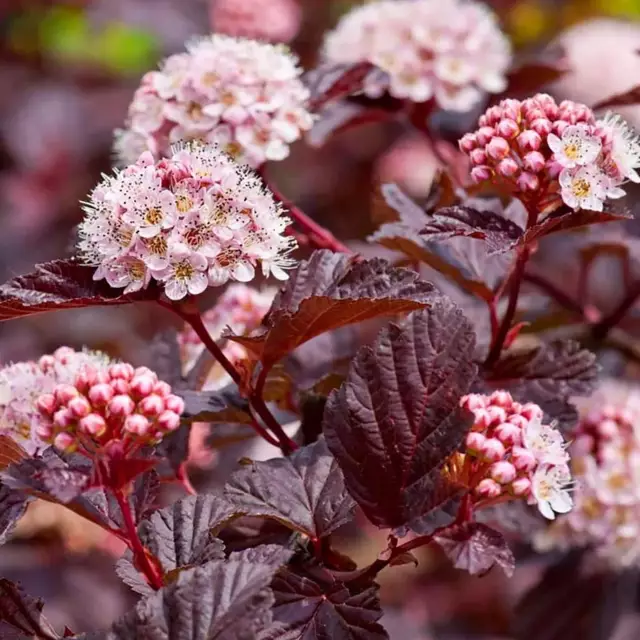 Breeders in England bred this variety with reddish leaves that darken with the advent of autumn cooling, and pale pink flowers. The shrub can reach two meters in height. The Royal Horticultural Society awarded the plant with a high decorative effect.
Breeders in England bred this variety with reddish leaves that darken with the advent of autumn cooling, and pale pink flowers. The shrub can reach two meters in height. The Royal Horticultural Society awarded the plant with a high decorative effect.
Vesicle Andre (Physocarpus Andre)
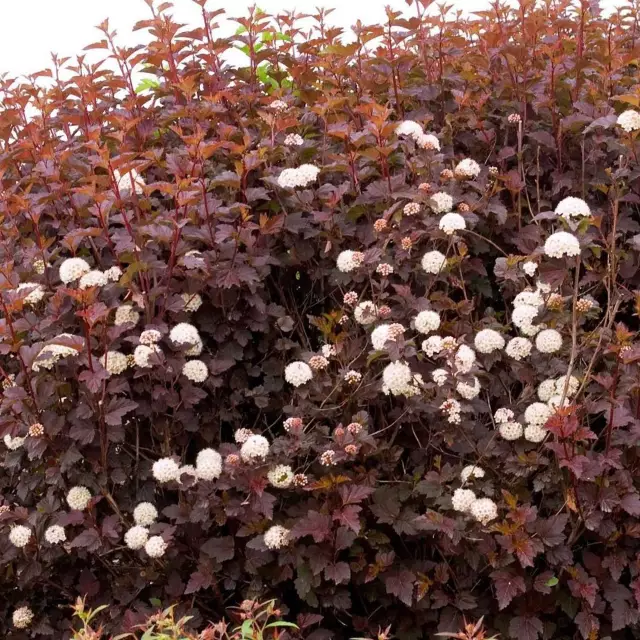 A voluminous two-meter shrub has elliptical ten-centimeter red-orange young leaves, which become reddish-bronze by autumn. With the onset of summer, creamy white or pale pink flowers appear on the shrub. The result of flowering ends with the appearance of bright red berries.
A voluminous two-meter shrub has elliptical ten-centimeter red-orange young leaves, which become reddish-bronze by autumn. With the onset of summer, creamy white or pale pink flowers appear on the shrub. The result of flowering ends with the appearance of bright red berries.
Vesicle Shuh (Physocarpus Schuch)
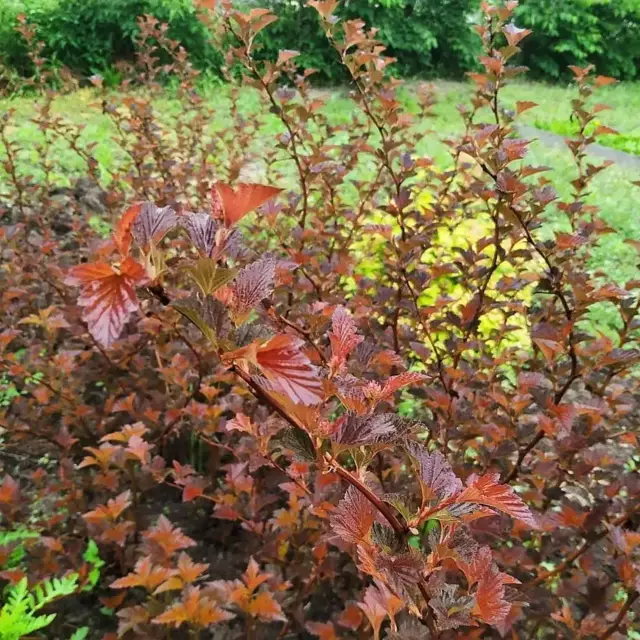 A two-meter shrub of this variety with reddish-wine leaf plates is not afraid of adverse factors and frosts. With the onset of summer, you can admire the inflorescences collected from pink and white flowers.
A two-meter shrub of this variety with reddish-wine leaf plates is not afraid of adverse factors and frosts. With the onset of summer, you can admire the inflorescences collected from pink and white flowers.
Vesicle Luteus (Physocarpus Luteus)
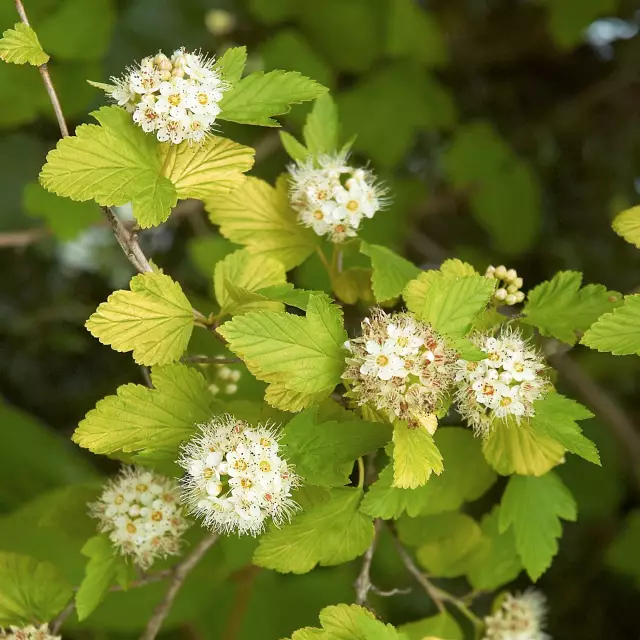 Tall three-meter shrubs with a crown diameter of four meters have very bright foliage that changes color seasonally. Young leaves have a yellowish color with an admixture of orange, in the summer they turn greenish-yellow, and in autumn they become beautiful golden. Very winter-hardy culture.
Tall three-meter shrubs with a crown diameter of four meters have very bright foliage that changes color seasonally. Young leaves have a yellowish color with an admixture of orange, in the summer they turn greenish-yellow, and in autumn they become beautiful golden. Very winter-hardy culture.
Vesicle Darts Gold (Physocarpus Darts Gold)
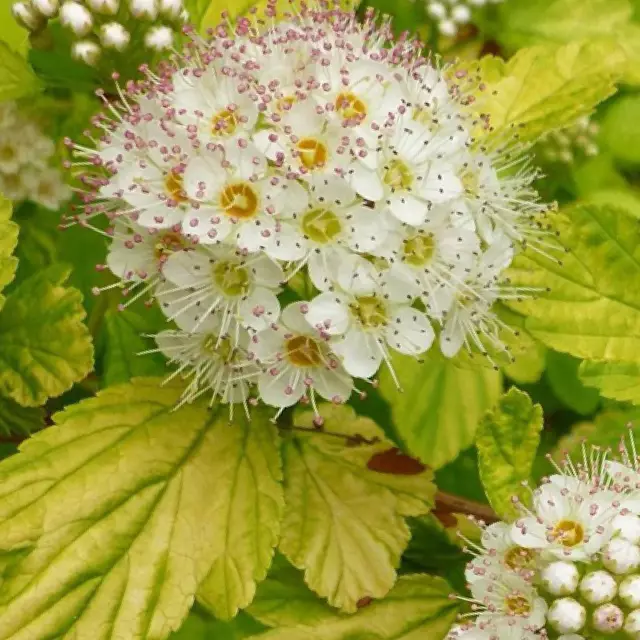 A one and a half meter shrub with yellow-orange leaf blades, in the summer it changes color to greenish-yellow, and by autumn they become bronze-yellow. It blooms with white flowers with a pink tinge.
A one and a half meter shrub with yellow-orange leaf blades, in the summer it changes color to greenish-yellow, and by autumn they become bronze-yellow. It blooms with white flowers with a pink tinge.
Bubble Nugget (Physocarpus Nugget)
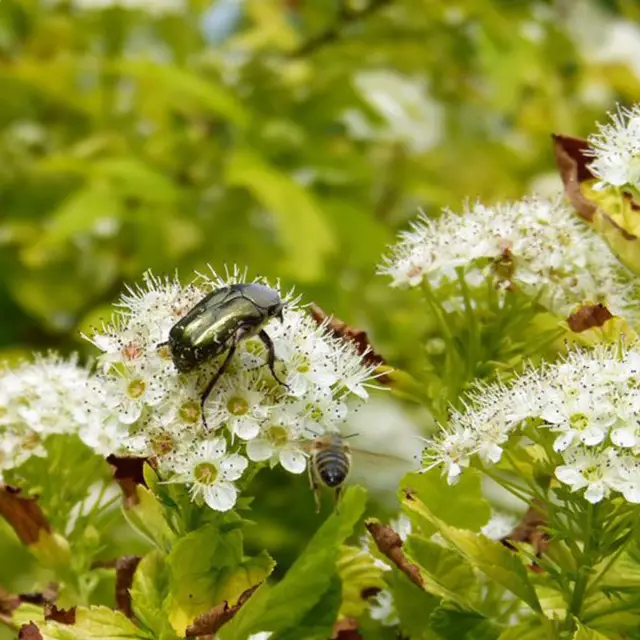 Yellow little leaves on a two-meter shrub tend to change color to green. Represented by a vase-shaped bush with thick vertical shoots.
Yellow little leaves on a two-meter shrub tend to change color to green. Represented by a vase-shaped bush with thick vertical shoots.
Aurea vesicle (Physocarpus Aurea)
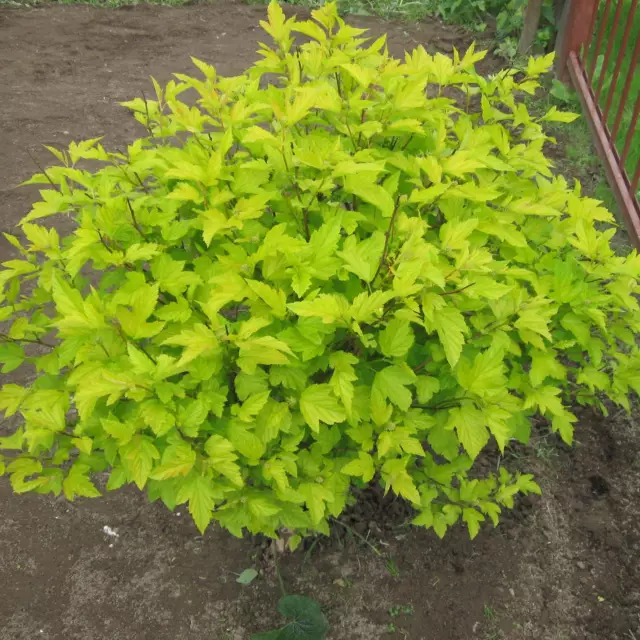 The height of this shrub is 2.5 meters. Bright yellow leaves in the summer slightly darken and acquire a green tint, and with the onset of autumn cooling they become golden yellow again.
The height of this shrub is 2.5 meters. Bright yellow leaves in the summer slightly darken and acquire a green tint, and with the onset of autumn cooling they become golden yellow again.
Vesicle Angel Gold (Physocarpus Angel Gold)
 French breeders have developed a new variety with golden leaves. A shrub more than two meters high has a lot of vertical sprawling shoots from which a dense rounded crown is formed. And it is decorated with seven-centimeter three or five-blade elongated, corrugated along the veins, very bright yellowish-lemon leaf blades, which become golden by autumn.
French breeders have developed a new variety with golden leaves. A shrub more than two meters high has a lot of vertical sprawling shoots from which a dense rounded crown is formed. And it is decorated with seven-centimeter three or five-blade elongated, corrugated along the veins, very bright yellowish-lemon leaf blades, which become golden by autumn.
It blooms in summer with a huge number of white five-centimeter flowers collected in thyroid inflorescences. Fruit ripening occurs in September. During the season, the bush grows by thirty centimeters. Flower beds, rock gardens, mixborders cannot do without this unique chic culture when creating impressive landscape compositions.
Vesicle viburnum care and cultivation
Dry moments for the vesicle negatively affect its condition.
Regular watering every three days will be pleasant for the plant, especially in the morning or evening hours. Water should not get on the leaves so that the sun does not burn the wet leaves. After watering, the soil is made loose and the weed is pulled out.
A couple of years after planting, the plant needs top dressing every six months. In the spring they are fed with mullein, ammonium nitrate, urea. For autumn top dressing, nitroammophoska is suitable.
Vesicle viburnum choice of location and landing
When planting, it is necessary to take into account some nuances: the territory should be well lit, without shading it with large trees. The plant does not have high requirements for the soil mixture. Its composition may include soddy soil, humus and sand. The main thing is that it be drained and loamy with an admixture of lime and other nutrients.
Planting a vesicle is not at all difficult. Cuttings of the vesicle are the most reliable way. How to root cuttings of the vesicle? Sliced cuttings are treated with a growth stimulator and planted in a flowerpot with a sand-peat mixture. In the spring, already with roots, the cuttings are planted at a permanent place of deployment. Rooting the vesicle in water is also easy. We put the cutting in some water and stimulate root formation with the help of root. We plant in partial shade.
How to plant a vesicle for a hedge?
First of all, we select a site, dig a groove, the depth and width of which should be half a meter. Place top dressings from organics and mineral compounds on the loosened bottom. Prepared bushes are planted at a distance of sixty centimeters from each other. The earth is well tamped and watered.
To get a beautiful hedge for the first four years, shear the twigs directed upwards.
Having achieved the desired result, we allow the plant to grow calmly in height, we carry out only sanitary pruning.
What to plant next to the vesicle? It will perfectly coexist with juniper, pine, rhododendron.
Vesicle on stem
The gardener can get this beauty for five years. How to form a vesicle bush? On a trunk grown over two years - the stem of a tree, the necessary plant is grafted. This completely simple procedure makes it possible to get a beautiful, healthy, slender tree that will decorate any garden.
With the help of high-quality forming pruning, you can also get a very beautiful bush. It is necessary to concentrate on one central shoot, which will be a trunk. The crown can be formed by pinching the tops of the branches.
Vesicle reproduction
Reproduction of the vesicle by layering can be done very easily in the spring. To do this, on a strong shoot, you need to cut off the leaves except for the crown. Lay it along its entire length in a prepared hole to a depth of ten centimeters. Cover with soil and water regularly.
By next spring, a young bush will form, which can be transplanted to a permanent place. It is even easier to reproduce the vesicle by piding the bush. Spring or autumn will be acceptable for this procedure. piding the bush into parts, they are immediately planted in prepared places.
Vesicle pests and diseases
The vesicle is a very hardy and disease-resistant plant and insects are not particularly afraid of it. The main thing is not to violate the growing conditions.
Chlorosis of the vesicle. This misunderstanding occurs with a plant with depleted soil in which there are not enough nitrogen, magnesium and iron compounds. This can be determined by the yellowing of young leaf blades and the drying of the apical stems. If such symptoms are found, the plant should be treated in the form of spraying or watering with solutions. Can be purchased:
- Ferrilene,
- Antichlorosis,
- Ferovit,
- Iron chelate.
With the qualitative fulfillment of the requirements of the vesicle, it will be a wonderful decoration for any territory.
To get acquainted with other no less interesting and charming plants, you need to open the catalog of indoor plants on the site from a to z.















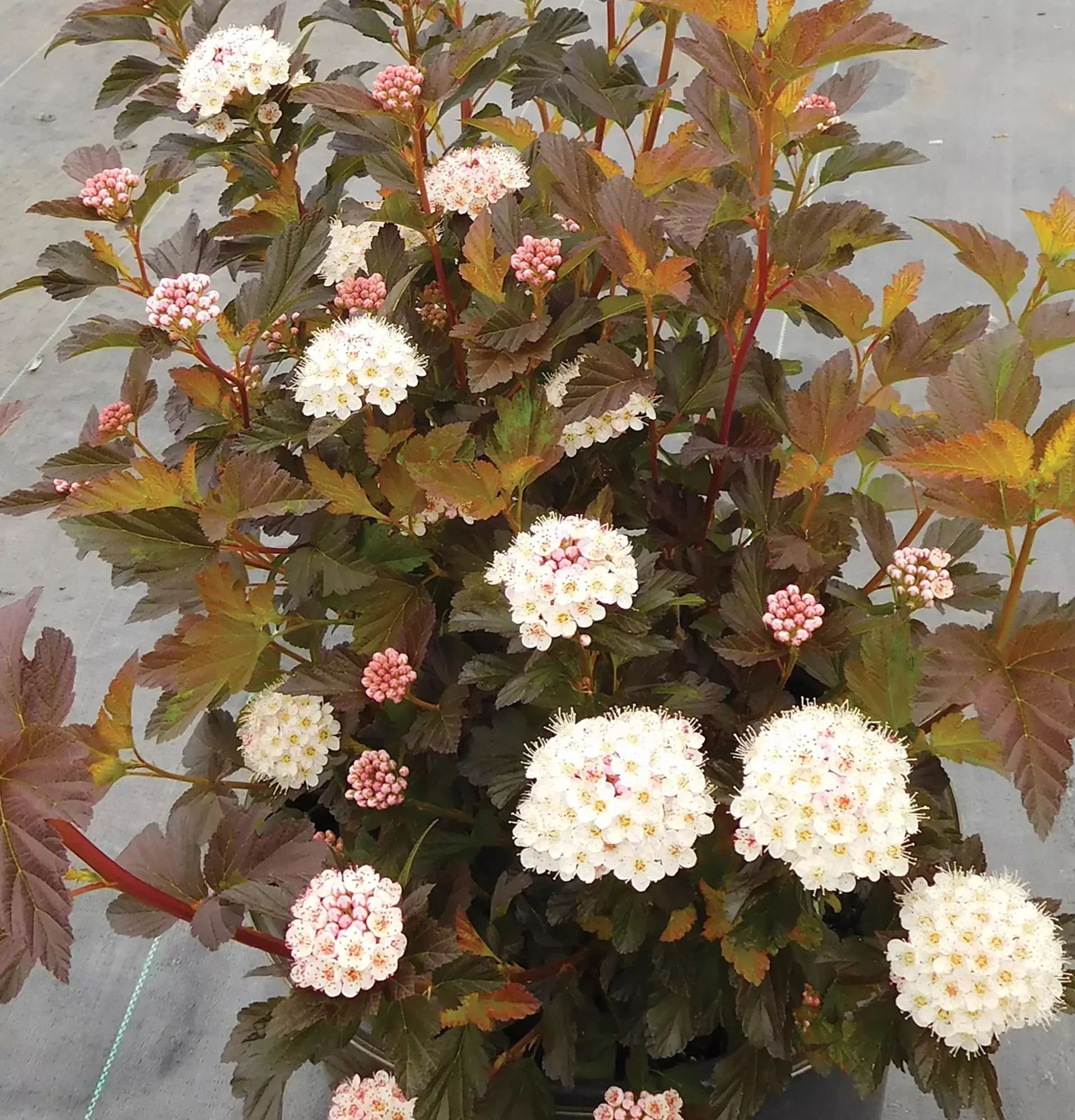
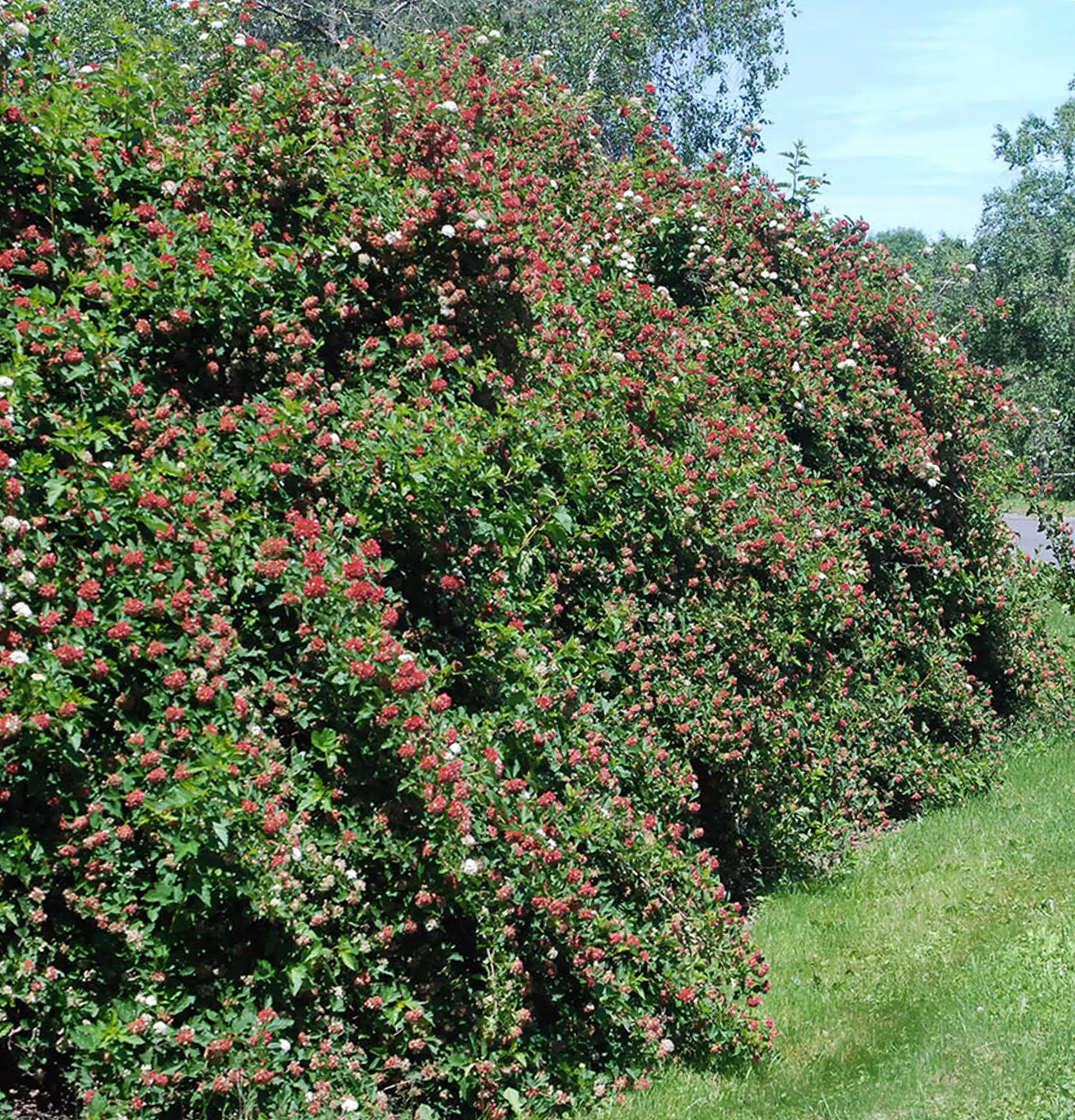

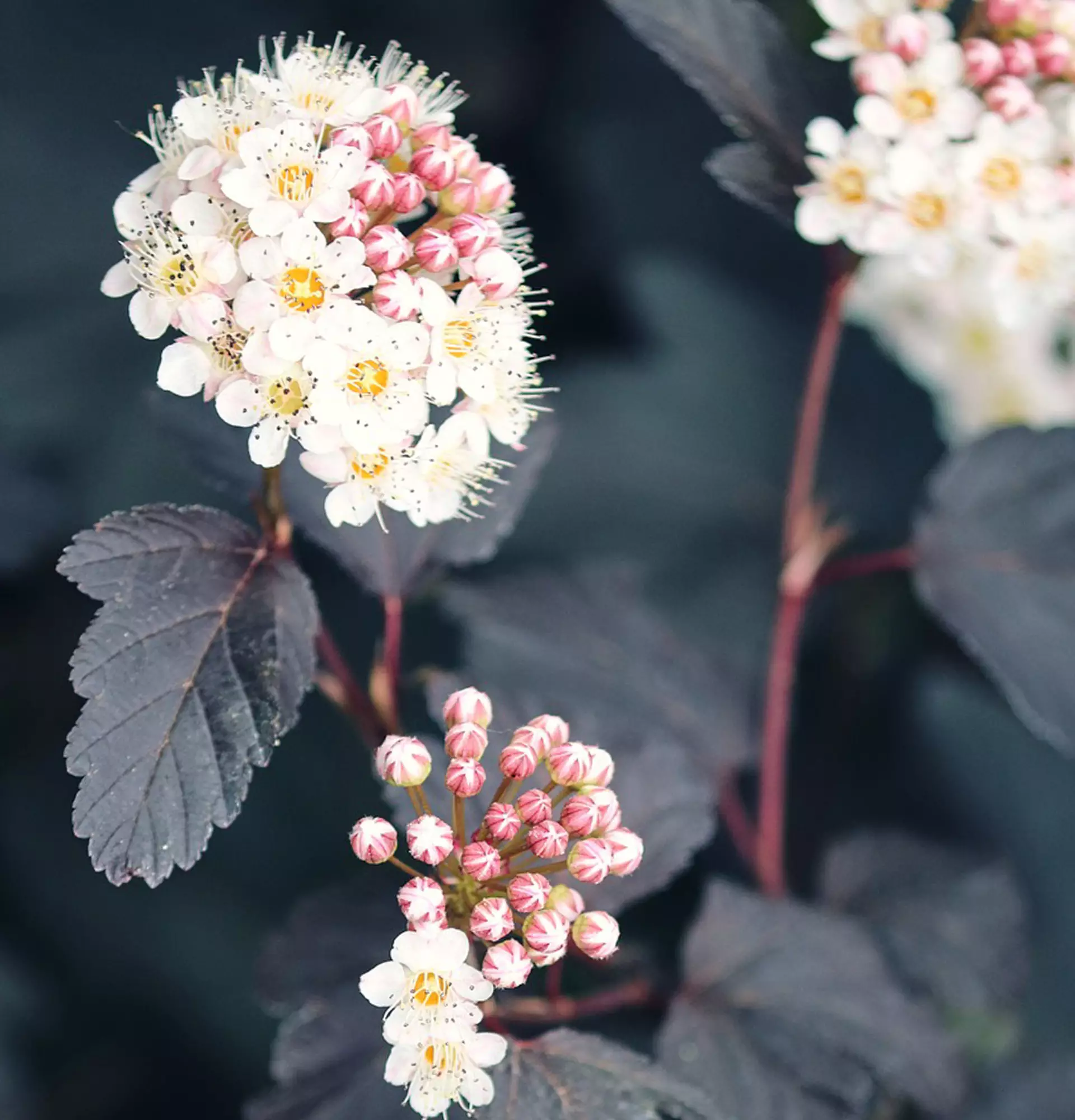



Write comments
Comments